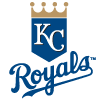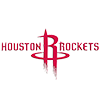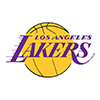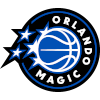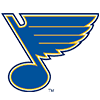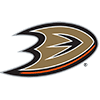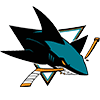If you're a Big Ten fan, you were probably developing a bit of an inferiority complex after the start of the 2009 season.
The conference hasn't won a national championship since Ohio State in 2002. The last two attempts featured the Buckeyes getting obliterated by Florida and LSU in the 2006 and 2007 title games, respectively, further supporting the idea that the Big Ten just can't keep up with the other BCS conferences.
If Big Ten fans were feeling uneasy before the season, their fears reached a new extreme when Ohio State, the conference's seemingly only hope for nationwide contention, barely escaped Week 1 with a 31-27 victory against Navy. While that was going on, the Iowa Hawkeyes nearly lost to the lowly Northern Iowa Panthers in a 17-16 contest.
Things got worse in Week 2. Fresno State, a WAC team, took Wisconsin to double-overtime, with the Badgers narrowly escaping in a 34-31 win. Meanwhile, Michigan State lost 29-27 to the MAC's Central Michigan.
The Week 2 low point came with the Buckeyes, however, as USC took them down in their home stadium. That same USC team would lose to the Washington Huskies in its next game and eventually finish the season fifth in the Pac-10.
It looked like the Big Ten just wasn't up to the task. It had been shown up by the Pac-10 and MAC, and the WAC and FCS nearly did the same.
But somehow, things turned around. The conference's four best teams—Ohio State, Iowa, Penn
If you're a Big Ten fan, you were probably developing a bit of an inferiority complex after the start of the 2009 season.
The conference hasn't won a national championship since Ohio State in 2002. The last two attempts featured the Buckeyes getting obliterated by Florida and LSU in the 2006 and 2007 title games, respectively, further supporting the idea that the Big Ten just can't keep up with the other BCS conferences.
If Big Ten fans were feeling uneasy before the season, their fears reached a new extreme when Ohio State, the conference's seemingly only hope for nationwide contention, barely escaped Week 1 with a 31-27 victory against Navy. While that was going on, the Iowa Hawkeyes nearly lost to the lowly Northern Iowa Panthers in a 17-16 contest.
Things got worse in Week 2. Fresno State, a WAC team, took Wisconsin to double-overtime, with the Badgers narrowly escaping in a 34-31 win. Meanwhile, Michigan State lost 29-27 to the MAC's Central Michigan.
The Week 2 low point came with the Buckeyes, however, as USC took them down in their home stadium. That same USC team would lose to the Washington Huskies in its next game and eventually finish the season fifth in the Pac-10.
It looked like the Big Ten just wasn't up to the task. It had been shown up by the Pac-10 and MAC, and the WAC and FCS nearly did the same.
But somehow, things turned around. The conference's four best teams—Ohio State, Iowa, Penn State and Wisconsin—got their acts together and all finished the regular season with nine or more wins. Better yet, all four won their bowl games, sticking it to the SEC, Pac-10 and ACC in the process.
By the end of the year, the Big Ten led the nation with three teams in the top-10 rankings, and tied the SEC for a nation-leading four in the top-20.
Heading into 2010, Big Ten fans are free of whatever self-doubt they had a year ago. Ohio State and Iowa both have national championship ambitions, and teams like Michigan, Michigan State and Indiana figure to be in better shape than they have been in years.
Ohio State is, as always, the favorite to lead the conference. Led by quarterback Terrelle Pryor on offense and tackle Cameron Heyward on defense, the Buckeyes figure to field their best squad since 2007.
Right behind the Buckeyes is Iowa who, like Ohio State, returns one of the nation's top-tier defenses. Defensive end Adrian Clayborn might be the nation's most disruptive defensive lineman, while safety Tyler Sash makes as many big plays as anyone. There's work to do on the offensive line with Bryan Bulaga, Kyle Calloway, Dace Richardson and Rafael Eubanks all gone, but there might not be anyone who knows how to put together an offensive line as well as coach Kirk Ferentz does.
Penn State looks like it'll be in for a drop-off in 2010, as it suffered more crucial offseason losses than any other Big Ten team. Star quarterback Daryll Clark is all but irreplaceable, and what was the nation's best linebacker trio in Sean Lee, Navorro Bowman and Josh Hull is wiped out entirely. Defensive tackle Jared Odrick, who ended up a first-round NFL Draft pick, will also be tough to replace. Players like running back Evan Royster and defensive end Jack Crawford have a great deal of star power, however, so the Nittany Lions will be anything but a pushover.
Wisconsin boasts the conference's top offensive producer in running back John Clay, who ran for 1,517 yards and 18 touchdowns in 13 games last year, as well as what might be the conference's best offensive line. Lance Kendricks might be the nation's best tight end, and he'll look to carry on the school's tradition of producing stars at the position (see: Owen Daniels, Travis Beckum, Garrett Graham). The loss of the phenomenal O'Brien Schofield is a major blow to the defensive line, however, and the Badgers secondary is quite weak. If the Wisconsin defense plays anywhere near the level it did in 2009, it will probably be because of its brilliant linebacker duo in sophomores Chris Borland and Mike Taylor.
Indiana might be the conference's best darkhorse threat, as it has one of the nation's best wideout groups, and quarterback Ben Chappell has a good amount of experience as a starter at this point. The loss of defensive end Jammie Kirlew and linebacker Matt Mayberry will hurt on defense, but the team hopes its experiment with the 3-4 will make the most of its personnel. While the Hoosiers will probably have trouble slowing opposing offenses, the wideout tandem of Tandon Doss and Damarlo Belcher means they just might be able to keep up with most.
In the end, though, defense will be the deciding factor in the Big Ten. Ohio State and Iowa will be among the nation's most dangerous teams, and it's because their defenses will put the clamp down on just about anyone they face. Their Nov. 20 showdown at The Horseshoe ought to be the most important Big Ten moment this year.
Terrelle Pryor, QB, Ohio State
Pryor probably won't be a great quarterback option in nationwide leagues, but his value in the Big Ten is quite high. The departures of Daryll Clark and Mike Kafka mean there's a lack of upside at the quarterback position in the conference, and Pryor's consistency as a runner provides a valuable source of points at a thin spot. He took a step back as a passer last year, but in 2010 he ought to play more like he did as a freshman, when he threw 12 touchdowns to just four interceptions.
Dan Persa, QB, Northwestern
We're taking a leap of faith by listing Persa here, but his situation is almost identical to that of Mike Kafka a year ago. As a backup in 2008, Kafka threw for 330 yards, two touchdowns and three interceptions while adding 321 yards and a touchdown as a runner. As a first-time starter last year, though, he shocked everyone by ending up as the Big Ten's top fantasy quarterback. The running ability and spread offense that made Kafka so productive also applies to Persa, who ran for 109 yards in a two-game span against Penn State and Iowa. Although the loss of two very good receivers in Andrew Brewer and Zeke Markshausen will make Persa's job tougher than Kafka's was, Persa still has the skill set to do big things in the Northwestern offense.
Ben Chappell, QB Indiana
Although Chappell is underwhelming as a real-life quarterback, his position on a team with great receivers and a bad defense should result in inflated passing stats. Losing an excellent left tackle like Rodger Saffold will hurt, but the presence of one of the nation's best wideout groups in Tandon Doss, Damarlo Belcher, Terrance Turner and Duwyce Wilson leaves reason for hope. Chappell should build on last year's numbers, when he threw for 2,942 yards, 17 touchdowns and 15 interceptions. He also had three rushing touchdowns. Chappell is a bit turnover prone, so expect the interception total to be similar, but look for the touchdowns and yardage to increase a good amount.
John Clay, RB, Wisconsin
Although there's a potentially large drop-off from Pryor to the next Big Ten quarterback, the gap between Clay and the next running back is probably bigger. Clay averaged 116.7 yards on the ground per game last year, and he totaled 18 touchdowns in 13 games. Penn State's Evan Royster was the only other Big Ten runner to top 1,000 yards last year, and even Royster failed to remotely approach Clay's touchdown numbers, scoring just eight times. If Royster can bounce back in 2010 and perform more like he did as a sophomore in 2008, when he totaled 1,396 yards from scrimmage and 12 touchdowns, then the gap between him and Clay would be significantly smaller. Still, if you have the first pick in a Big Ten-only draft, we have to recommend taking Clay at that spot.
Evan Royster, RB, Penn State
Royster had a bit of a down year in fantasy terms as a junior in 2009, but his numbers were still very respectable. His 1,169 yards from scrimmage and eight touchdowns in 13 games were entirely reasonable, but those stats were a disappointment after his more impressive sophomore season. The threat of Stephfon Green stealing carries still lurks, but the graduation of star quarterback Daryll Clark might mean that Penn State will run a fair amount more than it did in 2010. You might want to consider taking Royster as high as second overall in Big Ten-only leagues, because the spread of running back committees has damaged the conference's fantasy depth at the position.
Mikel LeShoure, RB, Illinois
Part of us wants to list LeShoure behind Clay, but LeShoure is significantly threatened by a running back committee situation. If it weren't for backup Jason Ford taking no fewer than 40 percent of the carries between the two, we might have listed LeShoure as the top fantasy option in the conference. LeShoure and Ford combined for 1,322 yards and nine touchdowns on the ground last year, and their numbers might go up with Juice Williams no longer around to steal rush attempts. Also gone is running back Daniel Dufrene, who took 63 carries last year. The bottom line with LeShoure is that we think he's definitely the best running back in the conference, and after averaging 6.8 yards per carry last year, we think his obvious talent will force Illinois to get him the ball more. Just don't take him ahead of Clay or Royster as long as Ford is around.
Al-Terek McBurse, RB, Purdue
McBurse didn't do anything as a running back last year, taking his four carries for zero yards. But the ACL tear suffered by starter Ralph Bolden means McBurse is expected to take over as starter this year, and he probably has the talent to take advantage of that. Like Bolden, who totaled 1,196 yards from scrimmage and scored 11 touchdowns in 12 games last year, McBurse was reportedly recruited by schools much bigger than Purdue, including Cincinnati, Nebraska, Georgia Tech and Miami (FL). McBurse is a big-play threat at the running back spot and, as long as he runs without hesitation and has the workload mostly to himself, we wouldn't be surprised if he produced similarly to how Bolden did last year.
Darius Willis, RB, Indiana
Willis was a solid recruit for Indiana in 2008, reportedly choosing the Hoosiers over the likes of Kentucky, Boston College and Illinois. He showed a good amount of ability as a redshirt freshman last year, running for 397 yards and two touchdowns in three games against Michigan, Northwestern and Purdue. The problem with Willis is injury concerns, as he was limited by ankle troubles almost the entire year. If he stays healthy, though, he is a solid option in the Big Ten.
Keith Smith, WR, Purdue
It's impossible to tell if Smith will work as well with his new starting quarterback as he did last year with Joey Elliott. Robert Marve, a Miami (FL) transfer, is expected to start this year, but Caleb TerBush will be providing competition all the while. If Purdue can settle on an effective quarterback, it's hard to suggest that Smith shouldn't be the first wideout taken in the Big Ten. He caught 91 passes for 1,100 yards and six touchdowns in 12 games last year, adding one passing touchdown on a trick-play. He even produced against Ohio State's brutal defense, catching 12 passes for 125 yards. It's worth noting that wide receiver is potentially the Big Ten's deepest fantasy position, so we probably recommend taking player like Pryor, Clay, Royster and maybe even tight end Lance Kendricks before taking Smith.
DeVier Posey, WR, Ohio State
While Smith looks like the favorite to lead the Big Ten in receptions and receiving yardage, it could be Posey that leads the conference in receiving touchdowns. He almost did that last year, catching 60 passes for 828 yards and eight touchdowns in 13 games. He mostly was at his best in the second half of the season, posting 39 catches for 560 yards and five touchdowns in the last seven games, giving hope that he'll be even better in 2010.
Tandon Doss, WR, Indiana
Posey might have more upside than Doss, but Doss might be the more consistent option. He came out of nowhere as a sophomore in 2009 to catch 77 passes for 962 yards and five touchdowns while adding 127 yards and a touchdown on the ground in 12 games. He showed the ability to produce against any defense, catching 14 passes for 164 yards and two touchdowns in two games against Ohio State and Penn State. The emergence of Duwyce Wilson at Indiana could take a few catches away from Doss in 2010, but he's good enough to arguably be the best wide receiver option in the conference.
Damarlo Belcher, WR, Indiana
Belcher isn't quite as good as Doss, but he's also a major threat and the perfect complement to Doss. At 6-5, 214, Belcher is an imposing figure at wideout and is one of the best wideouts in the conference. He finished his 2009 season with 61 catches for 770 yards and five touchdowns. If Belcher can build on the second half of 2009, in which he caught 35 passes for 482 yards and four touchdowns, his upside is as high as a WR1 in Big Ten-only leagues. If he could hold up that sort of production over 12 games, it would project to 70 catches for 964 yards and eight touchdowns -- very nice numbers for a Big Ten wideout. Belcher could be a player on the rise.
Marvin McNutt, WR, Iowa
Like Belcher, McNutt could be significantly better in 2010. Last year was his first at the wide receiver position, as he was recruited to play quarterback. The 6-4, 215, wideout emerged as an excellent scoring threat, putting up eight touchdowns on just 34 receptions. It's difficult to main that sort of catch-to-touchdown ratio, but McNutt should develop some more consistency in his second year as a wideout and ought to improve his yardage and catch totals, even if he scores fewer touchdowns in the process.
Lance Kendricks, TE, Wisconsin
Kendricks should be in for Travis Beckum-like numbers in 2010. The former big-time wide receiver recruit is a superb athlete for a tight end, and it's unlikely that almost any linebacker or safety group can contain him in a given game. Behind star tight end Garrett Graham last year, Kendricks still managed to post 458 yards from scrimmage and three touchdowns in 13 games. He gave a preview of what's to come in 2010 by shredding the Miami Hurricanes defense with seven catches for 128 yards in the Champs Sports Bowl. Kendricks could double the production of the conference's next-best tight end, so he might be worth as much as the third or fourth pick in Big Ten-only leagues.
Drake Dunsmore, TE, Northwestern
Although Kendricks is far and away the best tight end option in the Big Ten, Dunsmore seems to pretty clearly be the second-best. He caught 48 passes for 532 yards and three touchdowns last year and, with both of Northwestern's star receivers from 2009 no longer around, it wouldn't be shocking if Dunsmore led the Wildcats in receptions this year.
Iowa and Ohio State DSTs
Both of these defenses should be smothering in 2010. Ohio State and Iowa respectively ranked fifth and eighth in the nation in scoring defense last year, and we feel confident in saying both will wind up in the top-10 again this year. Adrian Clayborn (Iowa) and Cameron Heyward (Ohio State) might be the nation's two best defensive linemen, and they both have plenty of major talents helping them. We'd be surprised if either squad allowed even 15 points per game this year.
Keshawn Martin, WR, Michigan State
Martin is one of the best big-play threats in the country. If it weren't for a loaded group of wideouts at Michigan State, we'd have him in the Players to Target list. He only caught 18 passes last year, but he averaged 22.83 yards per catch, going for 411 yards and five touchdowns. He also added 219 yards and a touchdown on the ground in addition to two passing touchdowns and a kickoff return for a touchdown. Martin's versatility and knack for the big play gives him extremely high upside, but his inconsistent workload keeps him from being a top recommendation.
A.J. Jenkins, WR, Illinois
Jenkins is a former big-time recruit who we're expecting a breakout campaign from. The graduation of Juice Williams marks a new (perhaps naïve) hope for an efficient passing game for Illinois, and Jenkins figures to be the team's top target. He's a burner who reportedly chose Illinois over programs like Florida, LSU, Miami (FL) and Georgia Tech.
Da'Jon McKnight, WR, Minnesota
McKnight almost certainly won't be another Eric Decker, but he's in position to have good value in Big Ten-only leagues. He finished his sophomore season in a promising fashion last year, accumulating all of his 17 catches and 311 yards in the final five weeks. With Decker gone, McKnight is the best bet to step up as Minnesota's new top receiver.
Northwestern Running Backs
Arby Fields, Stephen Simmons, Scott Concannon, Jacob Schmidt … there's certainly no Damien Anderson in this bunch. There isn't even a Noah Herron or Jason Wright. All four of those backs averaged less than four yards per carry last year, totaling just 993 yards on the ground as a group. Fields was the team leader with 302 yards. None of these players is worth your attention.
Adam Weber, QB, Minnesota
It wasn't that long ago that everyone figured Weber was one of the better quarterbacks in the country. He finished his 2007 freshman season throwing for 24 touchdowns and a less-than-impressive 19 interceptions, but he ran for 617 yards and five touchdowns. His sophomore season saw that interception total drop to just eight. But last year, he was a wreck. He showed no running ability and couldn't create much at all as a passer. He threw 13 touchdowns and 15 interceptions while accumulating a total of -133 yards on the ground. For whatever reason, it looks like Weber has totally lost it.
Wisconsin DST
Big Ten-only league owners who missed out on the big three defenses (Penn State, Ohio State and Iowa) were saved last year by the surprise emergence of the Wisconsin defense, holding opponents to a respectable total of 21.8 points per game while forcing 27 turnovers and scoring twice on special teams. In addition to all that, the Badgers posted 37 sacks. The problem is that the guy responsible for that excellent pass-rush, defensive end O'Brien Schofield, graduated after the 2009 season. When he left, 62 tackles, 12 sacks and 24.5 tackles for loss went with him. J.J. Watt, Chris Borland and Mike Taylor remain forces in the front seven, but the below average Wisconsin secondary will get torched in 2010 now that Schofield won't be hurrying opposing quarterbacks.
Robert Marve, QB, Purdue
Marve is a Miami (FL) transfer who has the physical ability to be a major asset for Purdue. The issue is whether he can actually utilize his talents, as he struggled quite a bit when he played as a freshman for the Hurricanes in 2008. Still, he's managed to hold off a formidable competitor for the starting spot in Caleb TerBush, and he's a good athletic fit for the Purdue system. The most sure-thing options at quarterback in the conference are Pryor, Persa, Chappell, Kirk Cousins and Scott Tolzien, but Marve might have the highest upside besides Pryor and Persa.
cast necessary to turn into a legitimate fantasy option by the end of the year. However, he is in a heated competition for the starting spot with fellow high recruits Paul Jones and Robert Bolden.
Nathan Scheelhaase, QB, Illinois
Like Newsome, Scheelhaase is a former big-time recruit with the athleticism to be a major running threat right away. He reportedly turned down offers from schools like Oklahoma, Nebraska, Mississippi and Iowa to play for Illinois, so it's reasonable to expect big things from him. The issue is that his supporting cast isn't superb, and there's just no telling how easily he'll be able to step in and pick up the game. He's worth a gamble pick in Big Ten-only leagues, however, because his running ability alone could make him a sneaky play against poor defenses.









